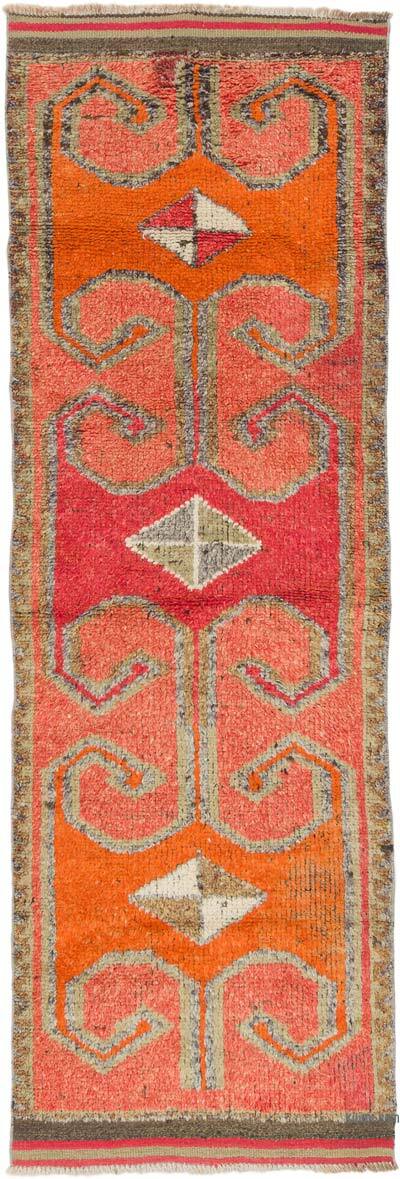Vintage Tribal Kilim Runner 2' 9" x 10' 4" (33" x 124")
Type:
Kilim RugsCollection:
Tribal Runners, ClearanceID:
K0077123Size:
Material:
The designs feature a rich array of symbols representing tribal culture and Anatolian motifs, often in the form of medallions, diamonds, and other geometric shapes.
The designs feature a rich array of symbols representing tribal culture and Anatolian motifs, often in the form of medallions, diamonds, and other geometric shapes. These kilim runners are ideal for hallways and narrow spaces, offering a touch of ethnic charm and artisanal quality to any interior.
Herki kilims not only serve as functional floor coverings but also as artistic expressions of tribal identity, making each rug a unique cultural artifact.
Design Elements
- Patterns: The vintage tribal kilim runner features repetitive geometric patterns that create a sense of rhythm and movement. The designs are symmetrical and structured, contributing to the overall aesthetic harmony.
- Texture: The flat weave technique utilized in kilim rugs offers a supple texture, enhancing the tactile quality while allowing for intricate designs to emerge clearly.
- Vertical Orientation: The long, narrow shape of the runner directs the eye along its length, making it suitable for hallways or corridors, and it promotes a feeling of elongation in the space.
- Border: A simple border delineates the central motif area, enhancing the focus on the middle designs while providing a finished look to the edges of the rug.
Colors
- Earthy Tones: Predominantly featuring warm, earthy colors such as browns and oranges, which evoke a sense of nature and grounding.
- Pops of Color: Bright hues like pink are interspersed among the earthy tones, adding vibrancy and liveliness to the overall palette.
- Contrasting Elements: The juxtaposition of muted base colors with bold accents creates visual interest and depth within the design.
- Harmonious Combinations: The choice of color combinations reflects traditional palettes that complement the cultural heritage associated with the rug’s design.
Main Motifs and Their Symbolism
- Diagonal Lines: Often symbolize the flow of energy and movement, representing life's journey and the interconnectedness of nature.
- Geometric Shapes: The angular designs may signify stability and strength, embodying foundational elements of life and society.
- Color Blocks: Bright, contrasting colors like pink and yellow can represent joy, happiness, and celebration, reflecting positive emotions in domestic life.
- Repetitive Patterns: Symbolize continuity and tradition, connecting the weaver with their ancestors and cultural history.
Summary
The vintage tribal kilim runner showcases elegant design elements characterized by geometric patterns, a textured flat weave, and a vertical orientation. Its color palette consists of warm earthy tones complemented by vibrant highlights, creating a striking visual impact. The main motifs convey rich symbolism, representing energy flow, stability, joy, and a deep connection to cultural heritage, making this rug a meaningful addition to any space.
- Ships in 1-4 business days
- Only one in stock, handmade, unique
- Free shipping via FedEx Express. Easy returns
- Contact us or add a note to your order if you want us to delay your shipping.
- Request more info if you want this rug shorter or narrower
Colors may appear slightly different across various monitors due to screen settings device differences, and external lighting conditions. If color accuracy is important for your space, we recommend viewing the rug on multiple devices or contacting us for a detailed color description. We can provide detailed photos and references using Sherwin-Williams, Benjamin Moore, Pantone, or even Crayola crayons.
You can also visualize most of our products in your own room with AR (augmented reality) on an iPhone or iPad.
Return Policy
Need a rug pad? We recommend RugPadUSA























Very efficient and prompt couldn't…